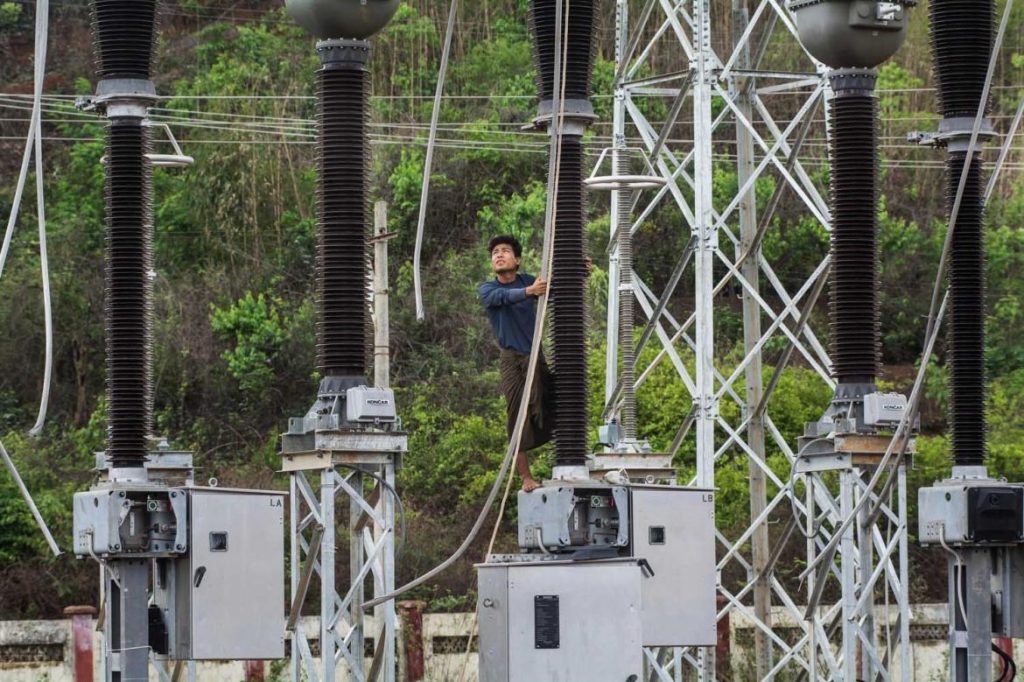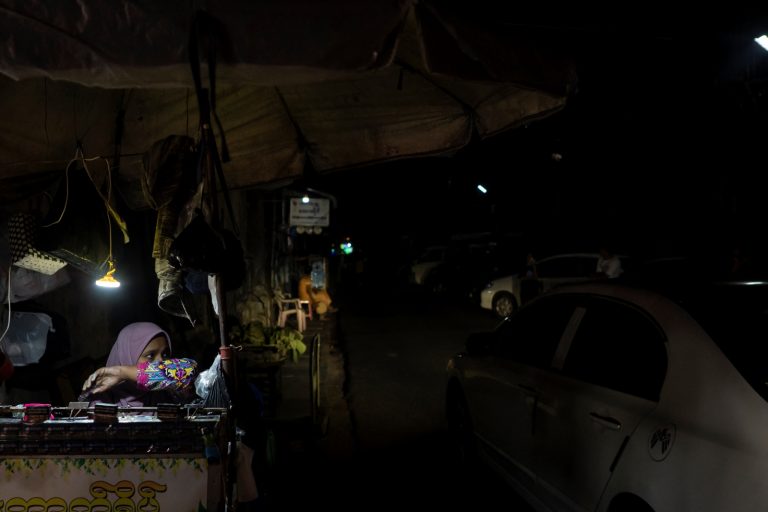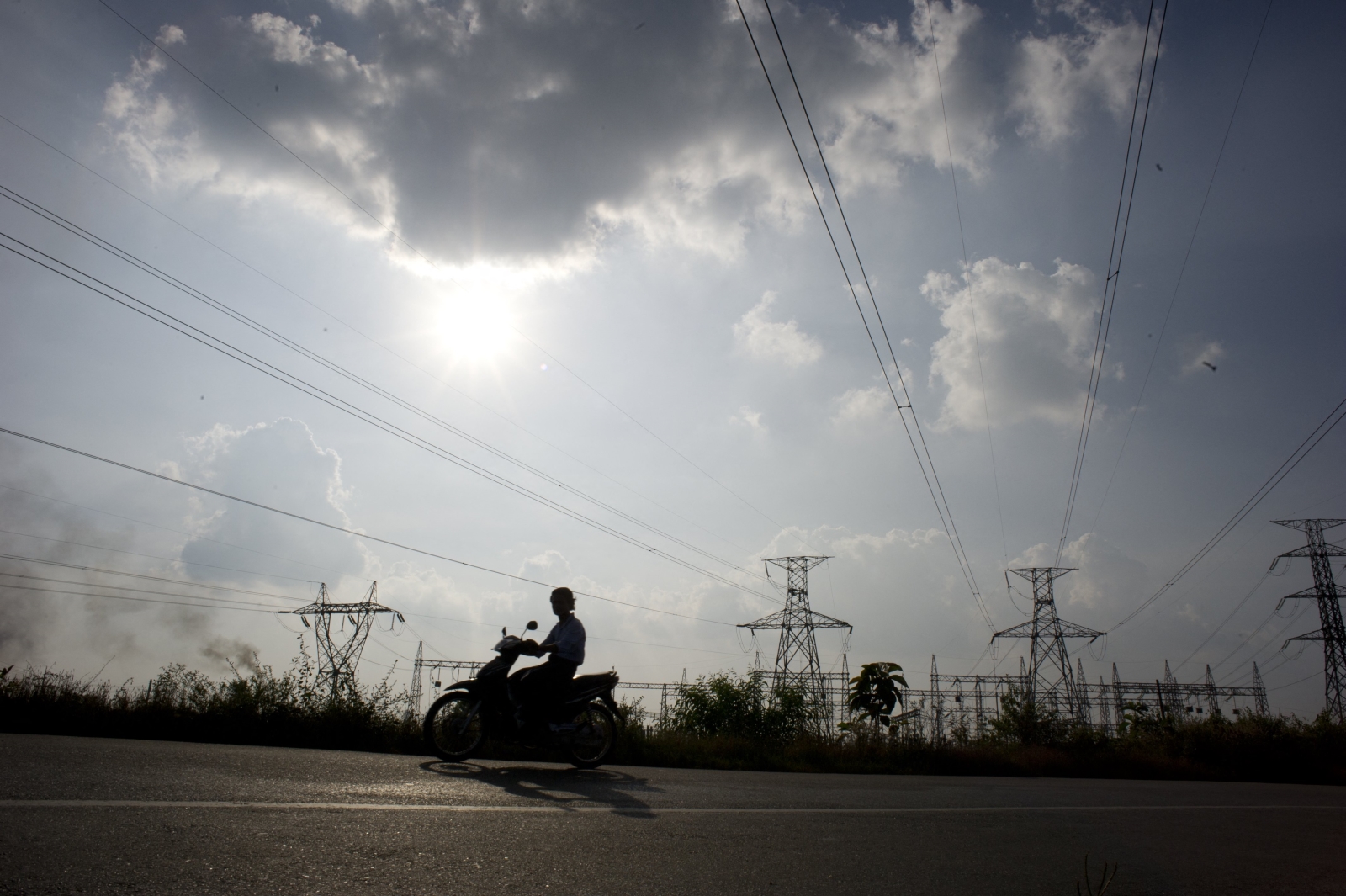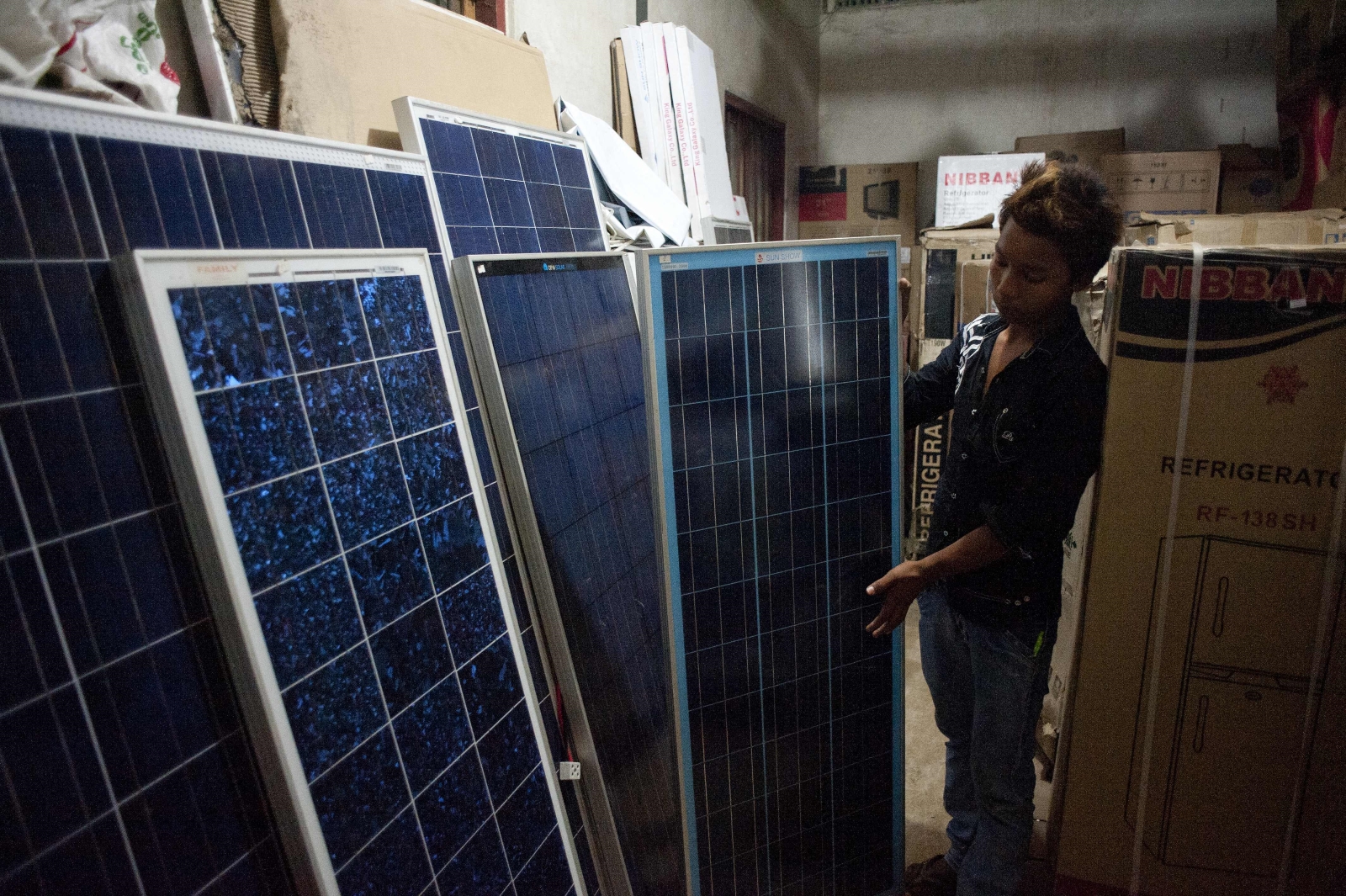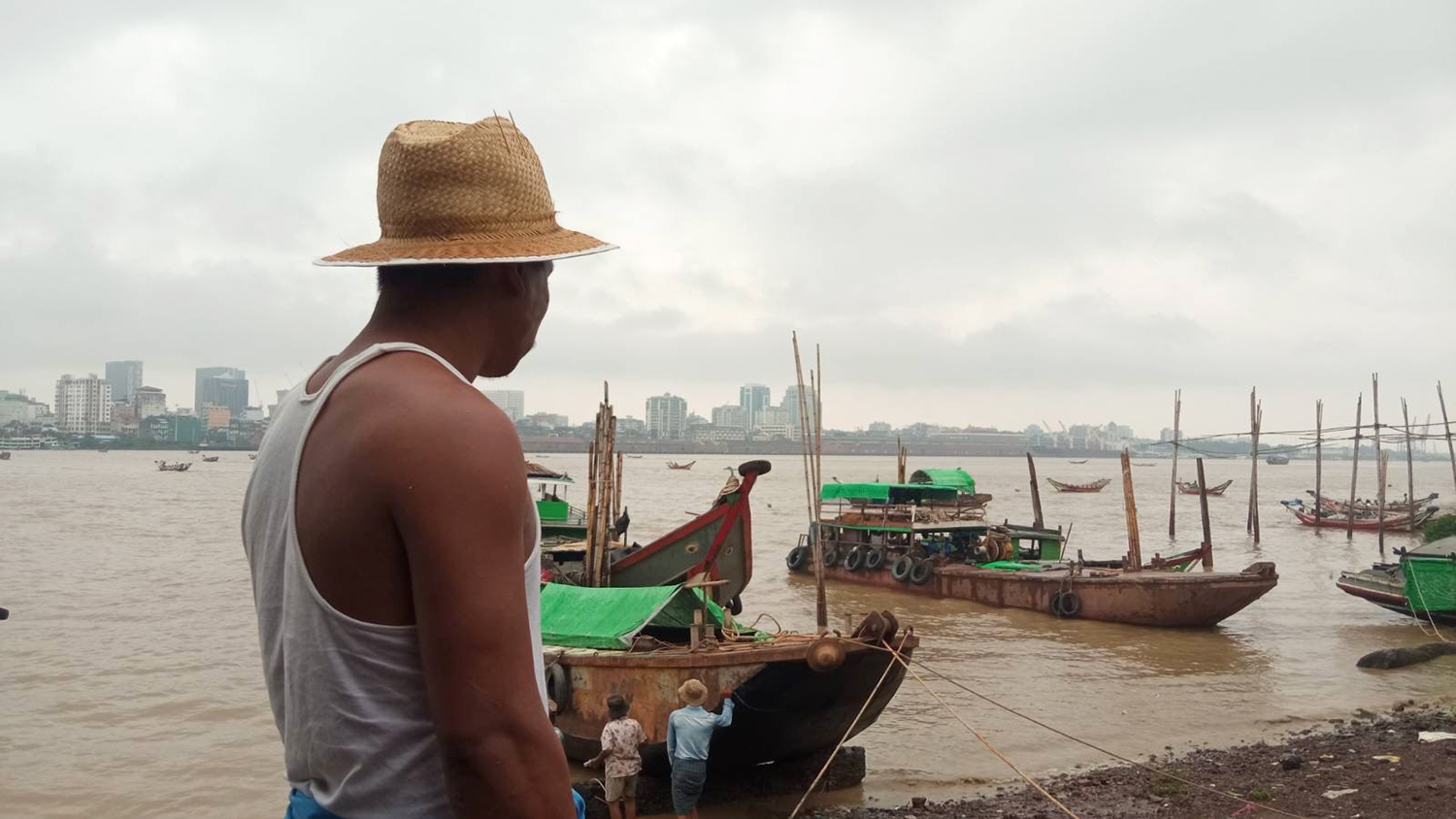Tensions are rising over a leaked government proposal to increase electricity prices amid growing doubts that emergency power sources needed to ensure supply through the coming hot season will be ready in time.
By KYAW PHONE KYAW | FRONTIER
MARCH 1 is often considered the unofficial start of summer. It was somehow appropriate then that an issue which increases in relevance and intensity in line with the temperature – electricity supply – was soon spreading like wildfire on social media.
Electricity prices to triple from April 1, the headlines screamed the next day. Particularly for Yangon residents, who consume half of the country’s power, it came as a rude shock. There were many critical comments from those worried about how they would pay their bills.
The source was Yangon Region Hluttaw lawmaker U Kyaw Zeya (NLD, Dagon-2), who told reporters that Yangon Region Chief Minister U Phyo Min Thein had revealed the price increase during a meeting between the Yangon Region government and local assembly lawmakers.
On March 3, Yangon Region Minister for Electricity, Industry, Transport and Communications Daw Nilar Kyaw fronted a stakeholder forum on electricity and energy at the Union of Myanmar Federation of Chambers of Commerce and Industry.
Support more independent journalism like this. Sign up to be a Frontier member.
Organised by the UMFCCI and the regional government, it drew a large audience of foreign and local businesspeople, journalists and other industry stakeholders.
Opening speeches from dignitaries at such events are normally formulaic, with a short address extolling the country’s economic potential. But in this case, Nilar Kyaw spoke for 30 minutes. She insisted that the chief minister had not told lawmakers that prices would triple. “I don’t know how this news has come out,” she said.

Residents of Putao use candles to provide light at night. (Ann Wang | Frontier)
Before her speech had concluded, the news that prices were not going to increase had already gone viral.
Kyaw Zeya soon responded on his Facebook page. “I can say that he [the chief minister] said that. He asked us to submit a proposal to increase the electricity price at the regional parliament,” he wrote.
He said he was angry that the chief minister had asked lawmakers to submit the proposal, adding that it could affect the legislature’s check and balance role. “If I were the speaker of the parliament, I would totally refuse [to accept what Phyo Min Thein requested].”
Budget black hole
While Nilar Kyaw denied the reports of a tripling of electricity prices, she did not deny that the government wanted to increase the tariff. During the stakeholder forum, both she and Dr Tun Naing, the Union Deputy Minister for Electricity and Energy, said prices had to rise to cover production costs.
“If electricity prices are not increased, the government will have to spend K900 billion on [subsidising] electricity for [the 2017-18] fiscal year,” Nilar Kyaw said. “This is the time to transparently let the public know the real situation. We have to do what we should do.”
The argument for an increase in prices is compelling. Because just 35 percent of households are connected to the national grid, only about a third of the country benefits from this K900 billion subsidy. But the effect is even more insidious, because it means the government has less money to invest in infrastructure, like grid expansion and improving generation capacity.
The obvious solution is to remove subsidies, but public opposition makes it politically very risky.
When the U Thein Sein government announced it would increase electricity prices in November 2013, it backed down in the face of opposition from the public and some lawmakers. A modest price hike was introduced the following April, with residential users paying the previous K35 tariff per unit (1 kilowatt hour) for the first 100 units and K40 per unit for the next 100 units. Any additional units used each month are billed at K50.
Industrial users pay K75 per unit up to 500 units, K100 from 501 to 10,000 units, K125 from 10,001 to 50,000 units, and K150 from 50,001 to 300,000 units. Above 300,000 units, the unit price will drop to K100.
Even with these increases, the government still loses an average of K23 per unit that it sells, Tun Naing said. While the average unit sale price is K69, it costs an average of K92 to produce and distribute a kilowatt hour of electricity.

A proposal to raise electricity prices dominated discussion at an electricity stakeholder workshop held at the UMFCCI on March 3. (Nyein Su Wai Kyaw Soe | Frontier)
According to Yangon Electricity Supply Corporation, 35 percent of electricity users in Yangon are in the K35 per unit bracket, while another 30 percent are paying the K50 rate. Just 0.07 percent of users are paying K150 a unit.
And the losses are increasing as more privately operated power plants enter the industry. Where once the government had a monopoly on power generation, it now buys 49 percent of its power from private power plants at commercial rates and resells it to the public at a steep loss.
Tun Naing said that when the government buys the electricity from private companies, the government has to pay an average of K68 per unit to operators of hydro plants and K158 per unit to those operating gas-fired plants.
He said that the only way to cover costs would be to increase prices from K35 to K110 per unit – the tripling of the tariff that Phyo Min Thein is said to have proposed to lawmakers.
The pricing issue is holding back badly needed increases to power generation capacity. The government is reluctant to agree to new deals with private producers because it will blow out its budget further.
U Zeya Thura Mon of Zeya and Associates, one of Myanmar’s local power producers, said private operators could build power plants and produce the electricity needed to meet demand if the government agreed to buy at commercially viable rates.
For businesses, which are already paying more than residential users, increased prices are a more acceptable proposition.
U Aye Thaung, chair of the management committee of Shwe Lin Pan Industrial Zone, said industrial zone representatives had told Phyo Min Thein at a recent stakeholder meeting that they would accept a higher tariff if it meant a more stable power supply, because the increased cost would be offset by savings from not using diesel generators during power cuts.
Power supply crunch looming
The second piece of bad news for electricity users is that electricity shortages are likely during the coming hot season, when production from the country’s hydropower dams drops sharply.
Both Nilar Kyaw and Tun Naing confirmed at the stakeholder forum that Yangon residents should expect blackouts as usual this summer.
It wasn’t meant to be this way. Last year, the government appeared to have plans in place to meet hot season demand. But its inability to finalise power purchasing agreements with private producers means new generating capacity will almost certainly not be ready in time.
In July 2016, the Electric Power Generation Enterprise issued an emergency power tender, seeking to buy 300 megawatts for five years. The government wasn’t fussy about how the power was generated, just that it was as cheap as possible and would be in place by the hot season of 2017.
In October, EPGE announced that a consortium comprising local firms National Infrastructure Holdings, and MCM Pacific and US companies APR Energy and Ace Resources Group had won the tender and would build a heavy fuel oil power plant in Yangon’s Ahlone Township. For the first year, while the plant was being built, diesel generators would provide the 300 megawatts of power.

The government will spend an estimated K900 billion on electricity subsidies in 2017-18, but barely one-third of households are connected to the national grid. (Teza Hlaing | Frontier)
But underscoring the huge task Myanmar faces in meeting just its immediate energy needs, the government also agreed to buy power from the runner-up bidder, Karpowership of Turkey. The company planned to send a ship laden with diesel generators to Myanmar, where it would pump another 300 megawatts into the grid to meet hot season demand.
Under the letters of agreement that were signed with the companies in October, the PPAs – which dictate the price at which the government will buy the power – were to be signed in January.
However, as of last week, they still hadn’t been signed, government officials confirmed to Frontier. Daw Nwe Nwe Win, director general of the Ministry of Planning and Finance’s Budget Department, told Irrawaddy that the Ministry of Electricity and Energy had not requested a budget for the two power suppliers in either the 2016-17 or the 2017-18 fiscal years.
U Aung Tun Myint, the general manager of Perpetual Power Solution, a subsidiary of MCM, said that under the original timeline, the company would be required to begin producing power within 90 days of signing the PPA. During hot season it needs to run the plant at 90 percent of capacity and 50 percent of capacity during rainy season.
Without the PPA, the project can’t move forward, though. Because the PPA dictates the price the government will buy the power, it would be risky for the company to invest in the necessary equipment until the agreement has been signed.
Aung Tun Myint said it would take up to three months to buy and install the equipment needed for the plant.
That makes it highly unlikely that the project could come online before the rainy season.
“For our side, we want to sign PPA as soon as possible,” he said. “We have already prepared the land for the power plant and built the roads. But we need to import some heavy machinery from abroad for the plant and we are hesitant to do that until we sign the PPA because it would be quite risky.
“I can’t say the exact date for when we will start electricity production because we don’t know when we’ll sign the PPA.”
Yangon Region Minister for Planning and Finance U Myint Thaung confirmed to Frontier that no price had been set for the purchase of the power from the plant, which is to be located in Seikgyikanaungto Township.
But he suggested that the project could still be up and running by May. “They can build the power plant even though the PPA hasn’t been signed yet,” he insisted. “If we didn’t want them to produce electricity, why we would we give them the land for the site?”
He said the PPA was the responsibility of the Union government so he couldn’t say when it would be signed.
U Khin Maung Win, the managing director of Electricity Power Generation Enterprise, confirmed that the government had not signed PPAs with either the National Infrastructure Holdings consortium or Karpowership.
“We’ve submitted the draft [PPA] to the higher level but we haven’t got permission [to sign it] from the respective department,” he said, refusing to say which department he was referring to.
He added: “I can’t say when the PPA will be signed. We are still discussing it.”
Asked whether the government had a backup plan to supply electricity to the country during the hot season, he said EPGE would “distribute as much as we possibly can” to the whole country.
U Maung Maung Latt, chairman of Yangon Electricity Supply Corporation, said the government would only begin buying electricity from the two companies in 2018.
“It won’t be ready for this summer. We will use gas turbines instead of the companies’ power plants. I don’t mean we will build new gas turbines – we have turbines that are not running at existing power plants so we will give more gas to these plants to run the turbines.
“I will hold a press conference soon to explain YESC’s plan to the media and public.”
TOP PHOTO: Electricity infrastructure is installed in remote Magwe Region. (Teza Hlaing | Frontier)


